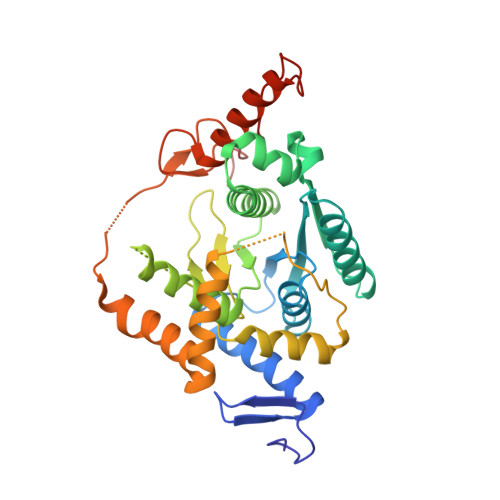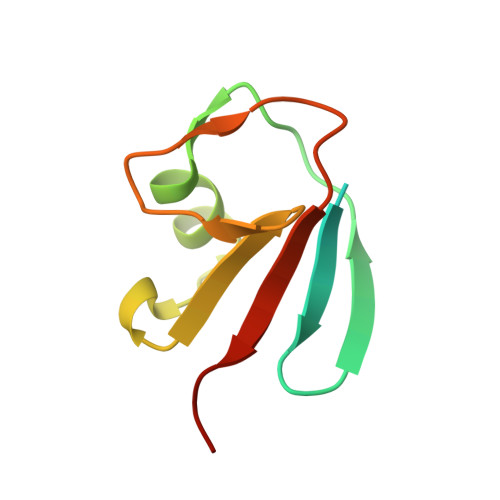Biochemical and structural characterization of oxygen-sensitive 2-thiouridine synthesis catalyzed by an iron-sulfur protein TtuA
Chen, M., Asai, S., Narai, S., Nambu, S., Omura, N., Sakaguchi, Y., Suzuki, T., Ikeda-Saito, M., Watanabe, K., Yao, M., Shigi, N., Tanaka, Y.(2017) Proc Natl Acad Sci U S A 114: 4954-4959
- PubMed: 28439027
- DOI: https://doi.org/10.1073/pnas.1615585114
- Primary Citation of Related Structures:
5B4E, 5B4F, 5GHA - PubMed Abstract:
Two-thiouridine (s 2 U) at position 54 of transfer RNA (tRNA) is a posttranscriptional modification that enables thermophilic bacteria to survive in high-temperature environments. s 2 U is produced by the combined action of two proteins, 2-thiouridine synthetase TtuA and 2-thiouridine synthesis sulfur carrier protein TtuB, which act as a sulfur (S) transfer enzyme and a ubiquitin-like S donor, respectively. Despite the accumulation of biochemical data in vivo, the enzymatic activity by TtuA/TtuB has rarely been observed in vitro, which has hindered examination of the molecular mechanism of S transfer. Here we demonstrate by spectroscopic, biochemical, and crystal structure analyses that TtuA requires oxygen-labile [4Fe-4S]-type iron (Fe)-S clusters for its enzymatic activity, which explains the previously observed inactivation of this enzyme in vitro. The [4Fe-4S] cluster was coordinated by three highly conserved cysteine residues, and one of the Fe atoms was exposed to the active site. Furthermore, the crystal structure of the TtuA-TtuB complex was determined at a resolution of 2.5 Å, which clearly shows the S transfer of TtuB to tRNA using its C-terminal thiocarboxylate group. The active site of TtuA is connected to the outside by two channels, one occupied by TtuB and the other used for tRNA binding. Based on these observations, we propose a molecular mechanism of S transfer by TtuA using the ubiquitin-like S donor and the [4Fe-4S] cluster.
- Graduate School of Life Science, Hokkaido University, Sapporo 060-0810, Japan.
Organizational Affiliation:




















